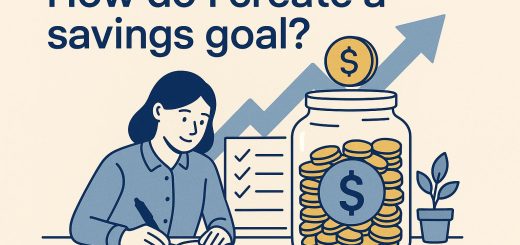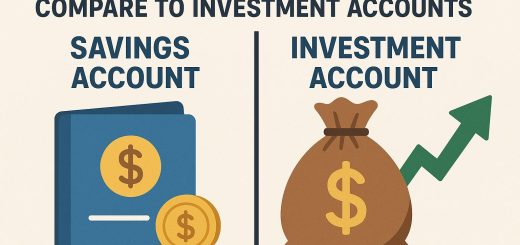What are high-yield savings accounts and how do they work?
Understanding High-Yield Savings Accounts
High-yield savings accounts present a compelling opportunity for those seeking to earn more from their savings compared to traditional savings account offerings. With their typically higher annual percentage yield (APY), these accounts are an inviting option for individuals aiming to optimize returns on their cash deposits without exposing their principal to market risks.
What Sets High-Yield Savings Accounts Apart?
The striking difference between high-yield savings accounts and standard savings accounts is the elevated interest rates provided by the former. While conventional savings accounts tend to offer minimal interest returns, high-yield savings accounts deliver significantly higher rates, sometimes exceeding 10 to 20 times the standard rates. This feature enhances the growth potential of your funds, augmented by the compounding interest effects.
How Do High-Yield Savings Accounts Work?
A high-yield savings account operates much like a traditional savings account, but there are a few pivotal differences:
1. Interest Rates: The attractive interest rates in high-yield savings accounts are largely fueled by competition amongst banks and financial institutions, particularly online banks. These banks often incur lower operational costs, enabling them to offer customers increased interest rates as a competitive strategy.
2. Accessibility: Much like standard savings accounts, high-yield savings accounts provide relatively seamless access to funds. Customers can usually transfer money between accounts or withdraw using online banking services or ATMs. However, some high-yield accounts might impose limitations on the number of permissible transactions each month.
3. Safety and Insurance: High-yield savings accounts in the United States are typically insured by the Federal Deposit Insurance Corporation (FDIC), up to the prevailing legal limits, offering protection in the unlikely event of a bank failure. This level of insurance aligns with the safety measures in place for standard savings accounts, offering assurance that your funds remain secure.
Considerations When Choosing a High-Yield Savings Account
When deciding on a high-yield savings account, it’s vital to assess several aspects to ascertain that the account meets your financial needs and objectives:
1. Interest Rate: It is crucial to understand whether the advertised interest rates are introductory and subject to change after a specified duration. Seek out accounts that maintain competitively high APYs consistently over time.
2. Fees: Evaluate any applicable fees that might impact your returns. Monthly maintenance charges or minimum balance requirements can diminish the interest you earn, so it’s important to find a fee structure that complements your saving habits.
3. Account Access: Ensure that you can easily manage your account by checking how smoothly funds can be transferred or how effortlessly the savings account can be linked to your primary checking account. Easy access is vital for effective financial management.
4. Financial Institution: Confirm the credentials of the bank or credit union offering the high-yield savings account, verifying its reputation and insurance coverage by pertinent government bodies. This due diligence adds a layer of security to your financial assets.
High-yield savings accounts are an invaluable means for individuals intent on boosting their savings without delving into riskier investment avenues. By carefully considering the criteria mentioned above, you can make sound decisions and potentially enhance your savings over the years.
Maximizing Your High-Yield Savings Strategy
To maximize the results from your high-yield savings account, consider adopting specific strategies that align with your financial objectives. Setting up regular automatic transfers from your checking account can enforce disciplined saving and ensure you capitalize fully on the high interest rates offered. Review your account details regularly to remain aware of any changes in terms or rates that could influence your savings approach.
Monitoring market trends can also be beneficial, as an understanding of broader financial landscapes may inform decisions to switch accounts or adjust strategies. Staying informed aids in making proactive changes rather than reactive ones.
Lastly, think about leveraging these accounts alongside other financial products such as certificates of deposit (CDs) or a diversified investment portfolio. By integrating high-yield savings accounts into a broader financial strategy, you can achieve a balanced approach that caters to your risk appetite while aiming for growth.
The Future of High-Yield Savings Accounts
Looking ahead, high-yield savings accounts are poised to remain a critical component of personal finance, especially as digital banking continues to evolve. As fintech companies and online banks gain prominence, the landscape is likely to witness increased competition, potentially leading to even higher interest rates and more innovative financial products.
With advancements in technology, accessibility and convenience are expected to improve, simplifying account management and user interaction. As a result, users could enjoy enhanced platforms offering robust tools for better financial planning and management.
Staying abreast of these changes is vital for individuals aiming to optimize their savings strategy. Engaging with educational resources, such as financial blogs and investment forums, can provide valuable insights into the shifting dynamics of high-yield savings accounts and broader fiscal management techniques.
In summary, high-yield savings accounts offer an exceptional opportunity for enhancing savings returns with minimal effort and risk. By understanding the distinct features, evaluating the considerations inherent in choosing such an account, and applying strategies to maximize benefits, individuals can navigate their financial landscape more effectively, ensuring their money works harder for them over the long term.
This article was last updated on: August 27, 2025







